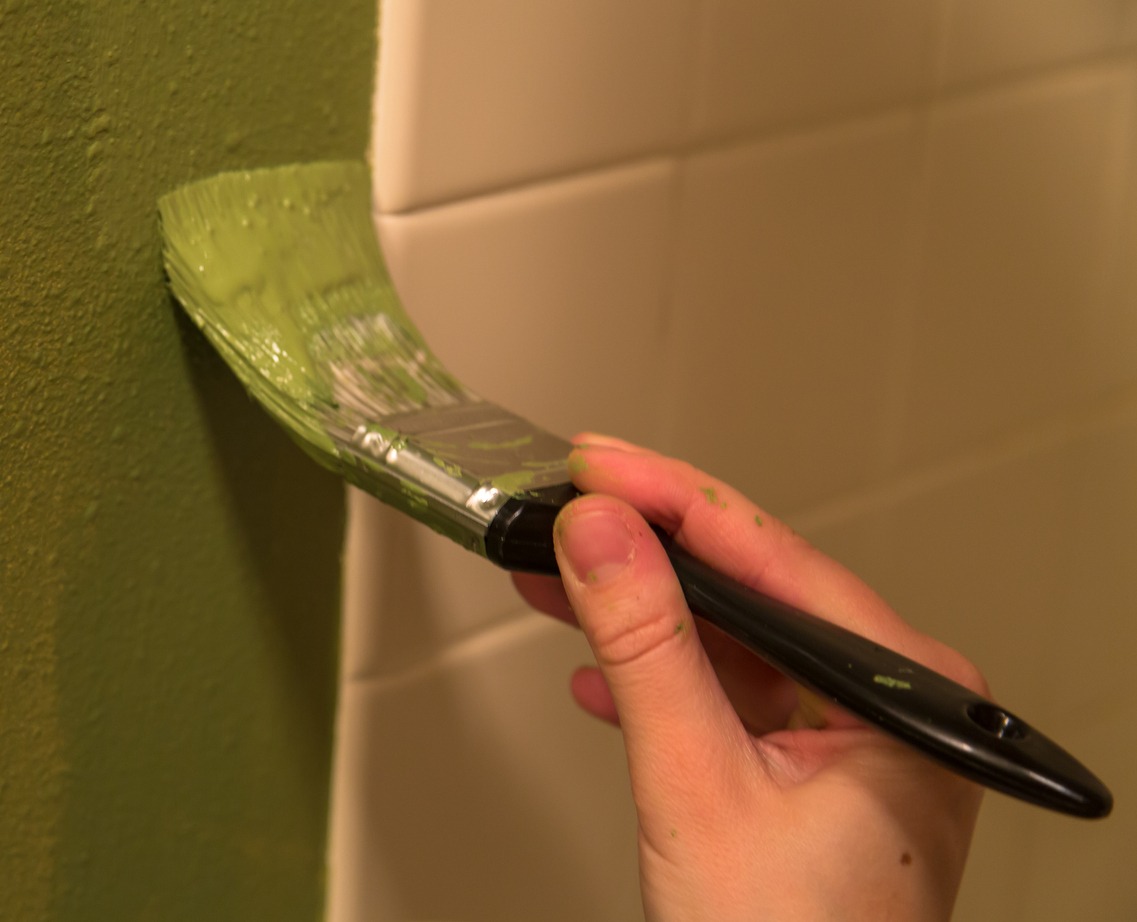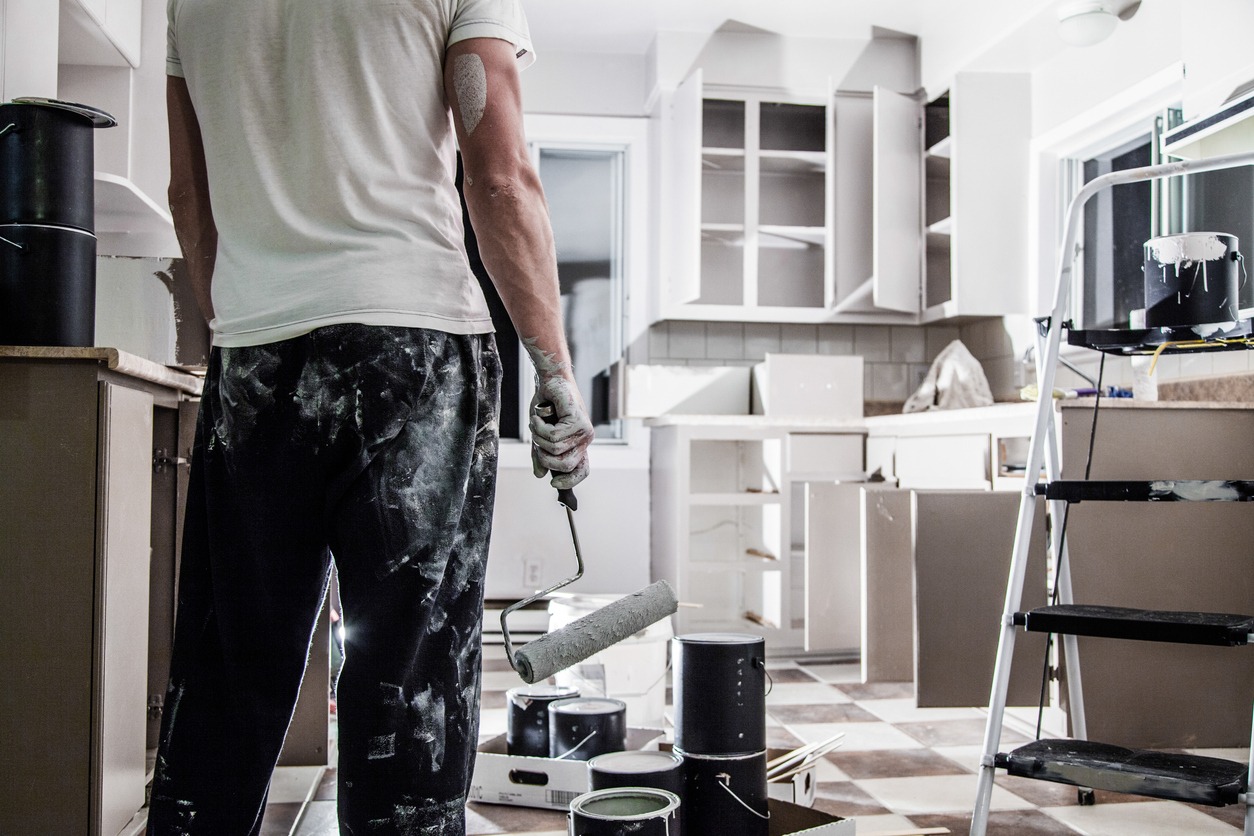Many homeowners struggle to decide which room to paint first in a home painting project. Starting with high-traffic areas like the living room or kitchen may seem logical, but this can cause more disruption to daily life.
If you’re facing a similar problem, don’t worry—Custom Painting, Inc. is here to help! We can help you create an efficient painting order, such as beginning with frequently used rooms or spaces that require significant setup. This can save you time, reduce stress, and minimize the impact on your everyday routines.
Start with the rooms that need immediate attention
When deciding where to start with home improvement, focus on rooms that need immediate attention:
Damaged or worn spaces
Prioritize rooms showing noticeable wear and tear, such as chipped paint, stains, or peeling. Tackling these areas first enhances the overall look and protects surfaces from further deterioration, preventing more costly repairs later on.
Rooms you use the most
Start with frequently used spaces like the kitchen, living room, or bathroom. These high-traffic areas will benefit from a quick refresh, allowing you to resume daily activities comfortably and with minimal disruption.
Paint high-traffic areas early on
Living room, kitchen, hallways
High-traffic areas like living rooms, kitchens, and hallways experience heavy daily use and tend to accumulate dirt, scuffs, and wear faster. Painting these areas early allows you to refresh them without prolonged disruption, ensuring that these essential spaces remain functional for family life.
To minimize inconvenience, plan the painting process around your family’s schedule. For example, consider painting the kitchen during weekends or vacations when you don’t need the space as frequently. In the living room and hallways, work in sections, allowing time for drying between uses to avoid blocking crucial areas for long periods. Quick-dry paints or low-VOC options can also help reduce downtime.
Paint bedrooms in phases to minimize disruption
Master bedroom first
Painting the master bedroom early ensures homeowners have a comfortable retreat as the rest of the house gets painted. This space provides a calm, relaxing area amid the disruption, making it ideal to prioritize for comfort during the process.
Children’s rooms
Children’s rooms should come next to minimize disruption to their routines. Painting one room at a time helps reduce chaos, allowing the family to maintain normalcy while the home is being transformed.
Guest rooms and lesser-used spaces
Guest rooms and lesser-used spaces can be left for last, as they don’t interfere with daily life. Their infrequent use makes them ideal to address once the more essential living spaces are completed.
Prioritize rooms that need longer drying times
Bathrooms and kitchens
Bathrooms and kitchens need special attention when painting due to their high moisture levels, which can slow drying and curing. Prioritize painting these rooms early in your project, giving them more time to fully dry before being exposed to humidity and daily use. It helps ensure a longer-lasting, durable finish.
Consider ceilings and trim first
Ceilings first, then walls
Begin by painting the ceiling to avoid paint drips on freshly painted walls. To ensure clean edges where the ceiling meets the wall, use painter’s tape or an angled brush for precision. It prevents mess and gives a crisp finish.
Trim and molding
Paint trim and molding after walls for a polished look, especially in high-traffic areas. Allow the paint to fully dry before moving the furniture back to avoid smudges or damage to the fresh finish.
Tackle large, open spaces in between smaller rooms
When tackling large, open spaces like living rooms and dining rooms, it’s wise to alternate them with smaller, more manageable rooms. Large spaces are usually more time-consuming due to their size, the amount of furniture to move, and the overall surface area to paint.
To prevent burnout and keep the momentum going, work on a smaller room, such as a bedroom or bathroom, in between large areas. Doing so gives you a break from the more demanding tasks, keeps the project from feeling overwhelming, and allows steady, efficient progress without stalling.
Save low-traffic or storage areas for later
When planning a painting project, save low-traffic areas—such as basements, garages, and closets—for last. These spaces typically experience less daily use and can be addressed at a more relaxed pace without impacting your routine.
Painting them at the end lets you focus on higher-traffic areas first, ensuring that essential living spaces are refreshed and usable as quickly as possible. Moreover, since these areas are often less visible, you have more flexibility with your time. You can ensure a thorough and careful job without the pressure of immediate functionality.
Factor in seasonal considerations
When planning painting projects, seasonal considerations are crucial, especially for exterior work. Exterior painting is best undertaken during warmer, dry months when temperatures are consistently above 50°F (10°C) and humidity levels are low. This ensures proper paint adhesion and drying.
If you plan to paint interior and exterior spaces, consider scheduling interior work during colder months when exterior conditions might be unfavorable. This approach allows year-round productivity, as interior projects can continue regardless of outdoor weather.
Additionally, interior painting during colder months can help maintain a comfortable environment without the disruptions caused by exterior work, such as noise and dust.
Coordinate with renovation or remodeling projects
Coordinating painting with renovation or remodeling projects can significantly enhance efficiency and your home’s aesthetic. Here’s how:
Align with home improvements
Timing and efficiency
When other renovations, such as flooring installation or fixture upgrades, are underway, scheduling painting in tandem can save both time and effort. For example, if you install new flooring, painting the walls before the flooring is laid minimizes the risk of paint splatters or damage to the new floors. Likewise, painting after installing fixtures allows for a cleaner finish without worrying about accidental spills on new installations.
Final aesthetic
Painting last in a renovation sequence helps ensure a pristine final appearance. By waiting until the other construction is complete, you can avoid unsightly dust, debris, or paint splatters on newly installed surfaces. This approach enhances the visual appeal and provides an opportunity for final touch-ups, ensuring your space looks polished and ready for use.
Conclusion
Planning the painting order by prioritizing the most used rooms over the least used ones is crucial for minimizing disruption and ensuring efficient progress.
This thoughtful approach not only helps you maintain a functional living space during the project. It also contributes to a smoother workflow. Proper planning ultimately helps you avoid costly mistakes, making the entire painting process more enjoyable and rewarding.
If you want a refreshed look and feel for your space but without the hassle, Custom Painting, Inc. is always ready to assist. Call us today at 925-294-8062 or message us here for a free consultation and estimate.



